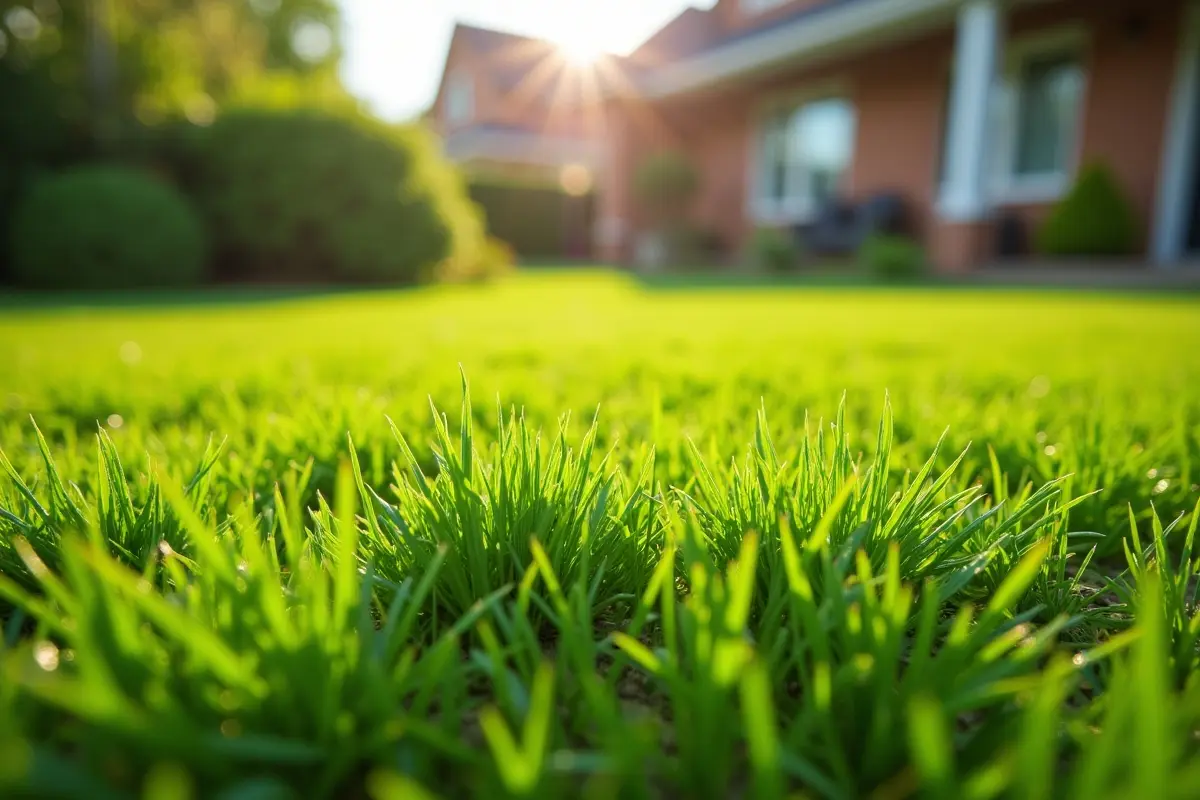Choosing the Right Grass Type for Your Yard
Identifying your region’s climate zone is one of the most important steps in developing a healthy lawn. The United States can be divided into three primary zones, which influence the grass types that will thrive. Your region’s temperature patterns, winters, and summers will play a significant role in this choice. For homeowners seeking expert guidance tailored to their area, Companies like Teed & Brown’s lawn care services in Harrison, NY provide customized solutions for optimal yard health.
The Northern Zone is known for frigid winters and milder summers. The Southern Zone experiences hot, lengthy summers and mild, short winters. The Transition Zone is the most complex, presenting cold and hot conditions throughout the year, making grass selection an exact science for lasting beauty.
Pinpointing your climate zone early helps skip common lawn-care mistakes. For instance, warm grass planted in the north may struggle through harsh winters, while cool grass in the south likely won’t withstand summer heat. You’re one step closer to a flourishing lawn by narrowing down your region.
Beyond climate, it’s advisable to research how different grasses respond to other environmental factors such as local rainfall and humidity. Accurate knowledge of your area’s unique weather patterns ensures the grass you choose will not only survive but thrive. HGTV offers a helpful guide to more grass varieties suited for diverse conditions and locales.
Northern homeowners benefit most from grasses that stay green during the cool weather of early spring and late autumn. These cool-season varieties prosper when soil temperatures range from 50–65°F, and air temperatures are moderate.
Contents
Kentucky Bluegrass
This beloved choice for northern lawns provides a dense, dark green carpet that can self-repair from wear and tear. Kentucky Bluegrass is ideal for areas with deep freezes followed by milder growing seasons. With proper fertilization and irrigation, it retains vibrant color and texture.
Perennial Ryegrass
Perennial Ryegrass germinates rapidly and offers a lush look soon after planting. Its fine leaf texture and durability make it a staple for sports fields and family yards where kids and pets play. However, it prefers consistent soil moisture and won’t withstand drought as well as some alternatives.
Tall Fescue
Tall Fescue features a deep root system that provides resilience during warmer spells or drought. This grass is ideal for high-traffic zones and balances drought tolerance and lush coverage, making it a favorite in parks and playgrounds.
Warm-Season Grasses for Southern Climates
Warm-season grasses are designed to thrive through sultry summers and minimal winter chill. These varieties flourish as soil temperatures pass 70°F, growing actively from late spring through early fall.
Bermuda Grass
This sun-loving, robust grass performs incredibly well in high-traffic areas. Its aggressive growth habits allow Bermuda grass to recover rapidly from heavy use. It’s also among the top choices for drought-prone southern landscapes.
Zoysia Grass
Zoysia is known for its dense texture, which forms a natural barrier against invasive weeds. Its sun and moderate shade tolerance make Zoysia suitable for properties with varied tree coverage or garden layouts. It requires less frequent mowing and watering than many warm-season alternatives.
St. Augustine Grass
St. Augustine Grass is favored in coastal southern regions and withstands saline air and partial shade. Its wide blades and thick mat minimize weed intrusion, while its adaptability makes it the grass of choice for many residential and commercial landscapes near the sea.
Grass Options for the Transition Zone
Homeowners in the Transition Zone face the unique task of balancing grass types for rapidly shifting conditions. Both cold winters and hot summers occur here, so only the hardiest, most adaptable options will perform all year.
Tall Fescue
Tall Fescue remains a leader in this zone because it tolerates drought and heat and can survive frosty winters. Its extensive root system allows it to adapt and resist common turf diseases.
Zoysia Grass
Offering a happy medium between cool- and warm-season tendencies, Zoysia is suitable for areas experiencing both extremes. It excels in lawns that might see both heavy sunlight and moderate shade during different seasons.
Bermuda Grass
With its robust growth and heat tolerance, Bermuda Grass is reliable for properties exposed to full sun and intense summer highs. Bermuda can be trimmed low for a refined appearance, making it popular for sports fields and home lawns.
Assessing Soil Compatibility
Soil quality directly impacts your lawn’s health, and not every grass variety thrives in every soil type. A soil test is a critical early step, revealing pH levels and nutrient composition. With their fast drainage, Sandy soils benefit from drought-resistant species, while clay-rich soils retain water and demand grasses equipped for moist conditions. Amendments can sometimes help tailor the soil, but your best bet is selecting grass that matches your natural ground.
Considering Sunlight and Shade
How much sunlight your yard receives daily will determine your grass options. Some, like Bermuda grass, require full sun to thrive, while others—such as Fine Fescue—are more tolerant of partial or full shade and require less water. Assess your yard throughout the day to spot areas of direct sun and pockets of shade to select the right grass for each part of your lawn.
Maintenance Requirements
Lawn maintenance varies greatly depending on the grass type. Zoysia and Tall Fescue perform well with infrequent mowing and modest watering needs if you seek lower upkeep. Other varieties, especially fine-bladed and quick-growing types like Perennial Ryegrass, require a more rigorous routine. Consider your preferred level of involvement and whether you’d like to automate or outsource care before making a final choice.
Final Thoughts
Careful selection of grass, based on climate, soil compatibility, sun and shade patterns, and your willingness to maintain, sets the foundation for a healthy, visually pleasing lawn. Understanding each factor and researching grass types suited for your location can create a vibrant, low-maintenance landscape that enhances your outdoor living space year-round.

